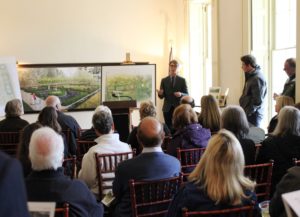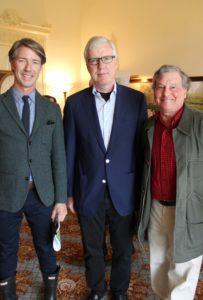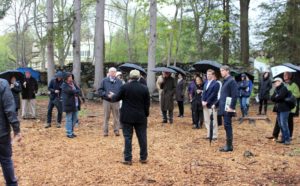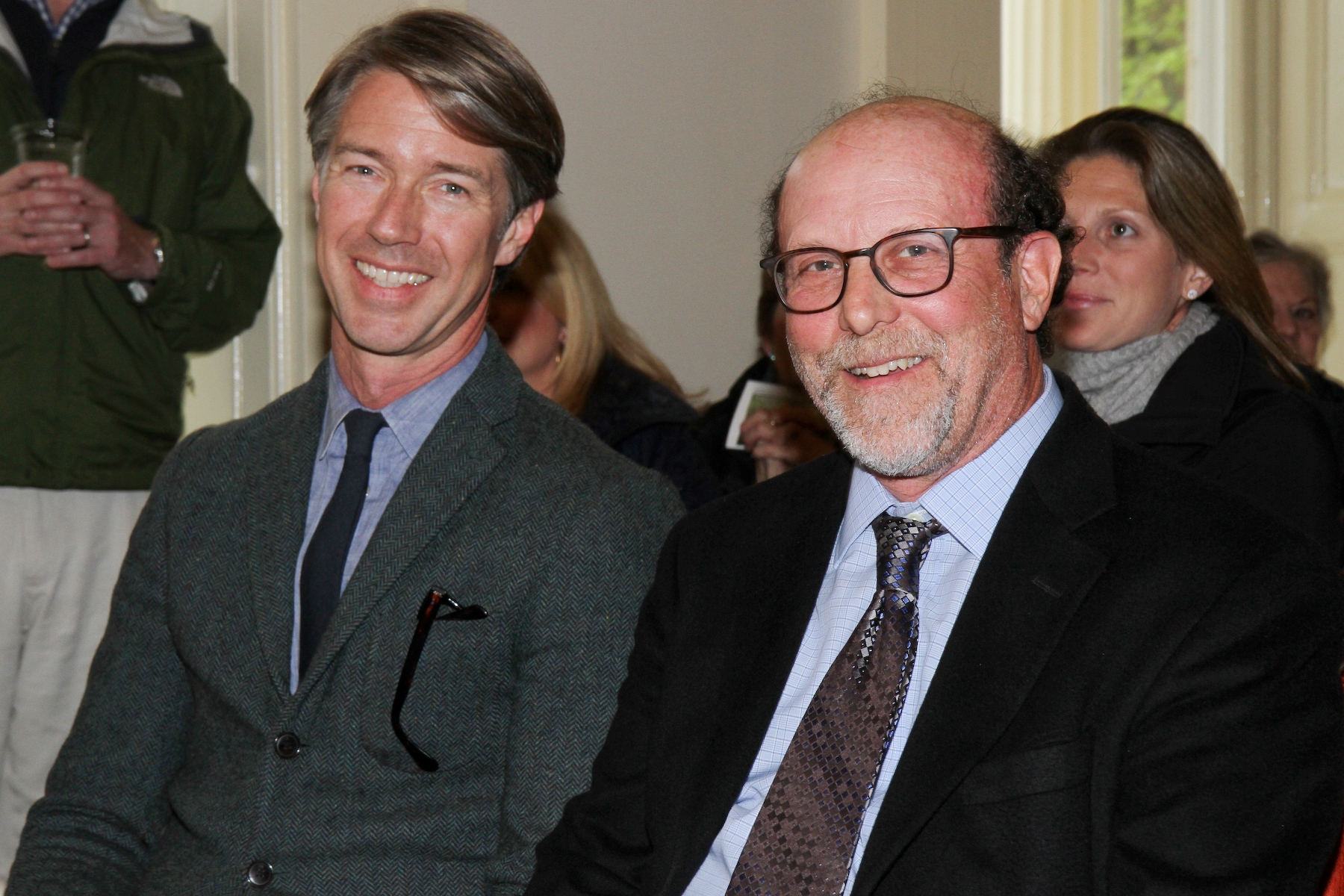Brisk, rainy weather couldn’t deter JHC members and friends from coming out to the Jay Estate on the first day of May for a program aptly called “Views from Our Veranda.” First steps towards a significant and thoughtful rehabilitation of this nationally recognized park have been discussed for almost twenty years and now have clear definition as well as an enthusiastic groundswell of support. Over 70 people came to hear presentations by Landscape Architects Thomas Woltz and Larry Weaner.
On arrival, everyone saw gorgeous planters brimming with native species like baptisia and butterfly weed that attract birds and monarchs. Large color banners and a vibrant slideshow illustrated the restorative impact of planting these same specimens and others at the landmark site. Weaner and Woltz both explained the guiding principles in this multi-year endeavor: increasing biodiversity and providing greater access to open space and cultural heritage for the community. Thomas Woltz framed the discussion first with a synopsis of the gardens’ timeline of ownership and described the dominant features of the 3 “garden rooms” under design which include parterre plantings, vegetable beds, a reflecting pool, and pollinator panels anchored by a rose arbor. He noted that there is no one fixed point in history that the spaces can or should be restored to; instead known historic features and plantings will inform a modern and sustainable interpretation rather than a period style recreation.
Larry Weaner followed with his own scientific observations of the site having studied the inventory of invasive and native species rooted there. Seeing what he called a “Confluence of Centuries,” Weaner explained the importance of preserving the imprints of many natural and human inhabitants from the Paleo-Indian era through an estate period that included ownership of enslaved men and women up to contemporary usage. Etched memorial stones telling these stories will be laid in a mown path through the meadow NY State Assemblyman Steve Otis applauded the efforts and perseverance of the JHC Board.
Many of the guests then headed outdoors in slickers and wellies to see the landscape up close and ask follow-up questions. Afterwards they returned back to the mansion to enjoy refreshments provided by Rye’s own Rosemary & Vine. JHC is currently hoping to raise enough money to plant the upland part of the Jay meadow by October 2016.


